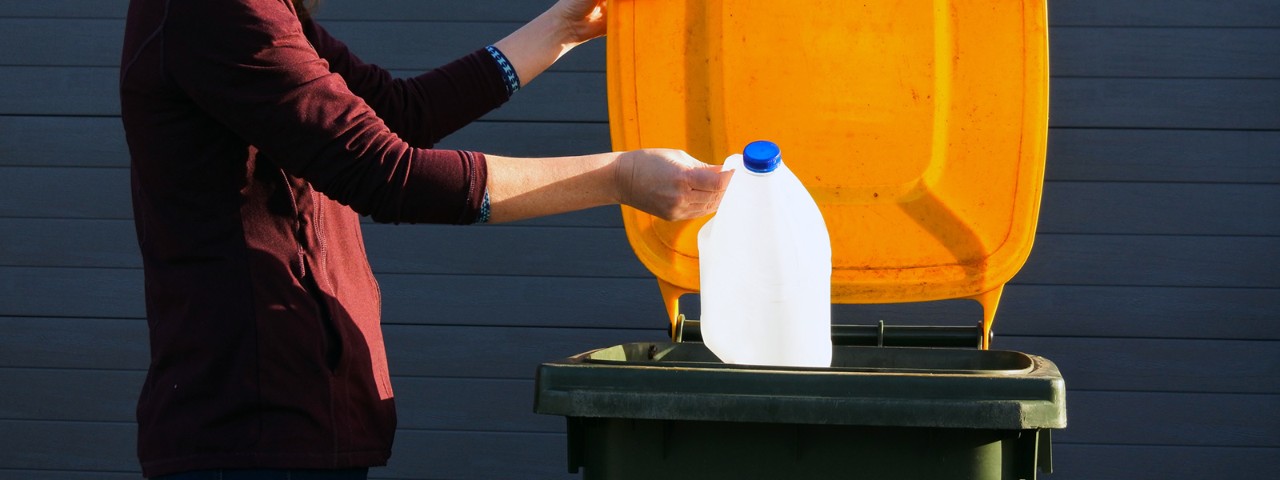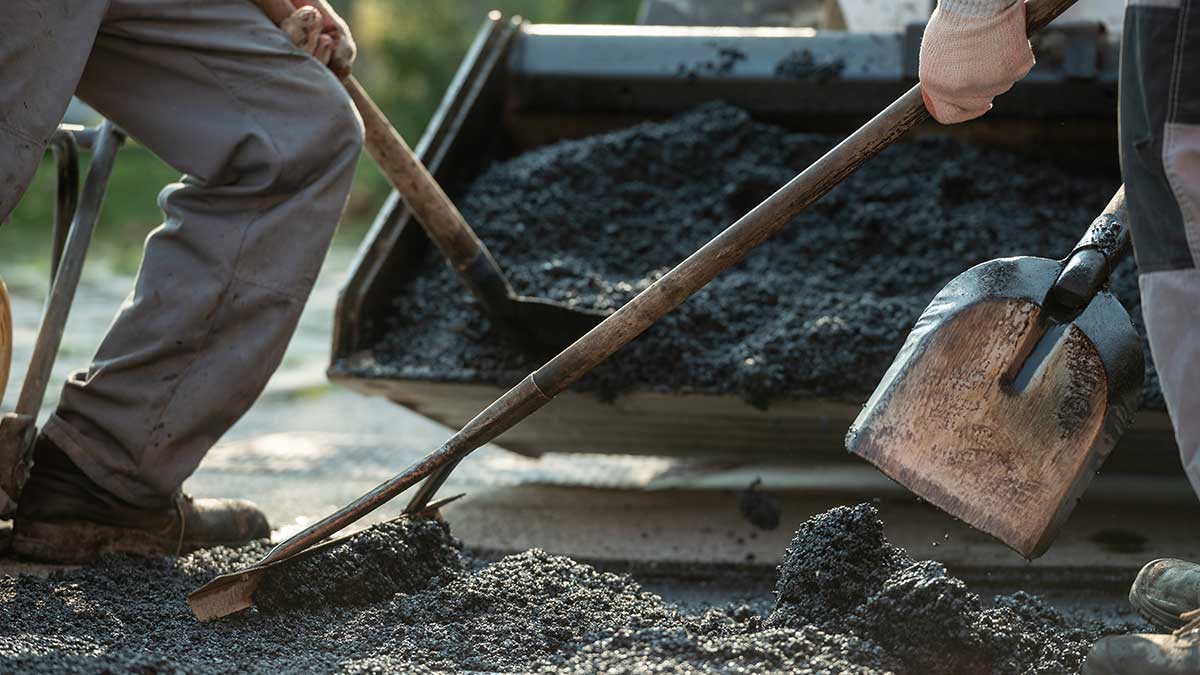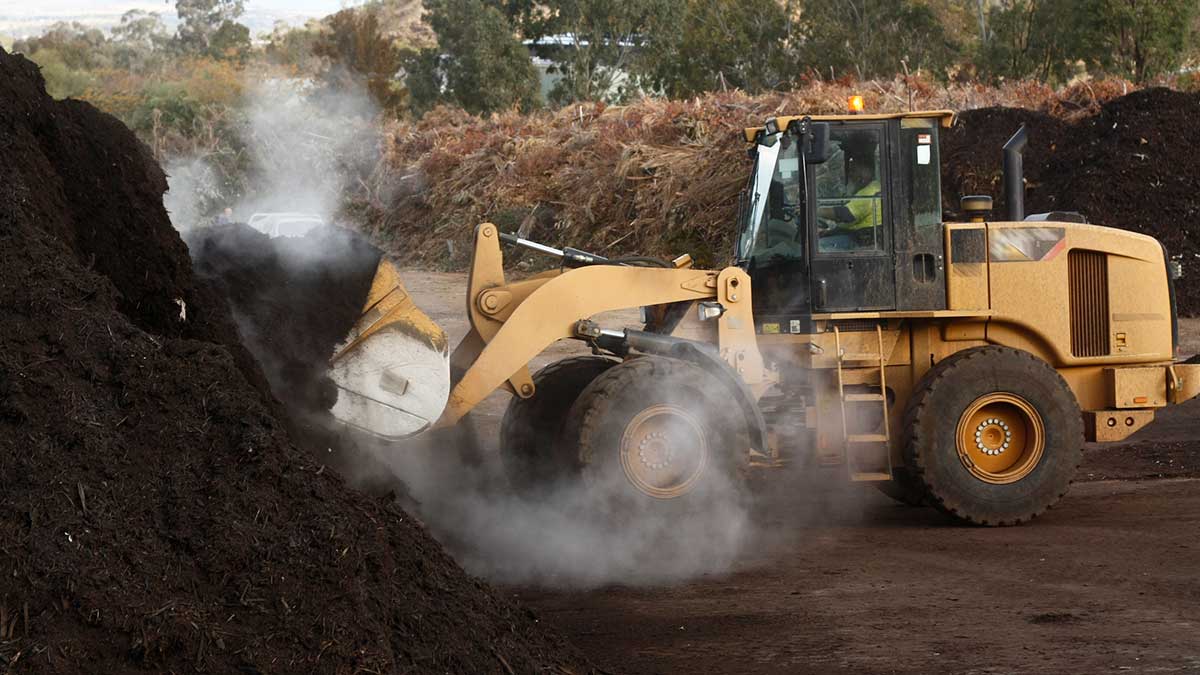Australians have fallen in love with air fryers. Discover how they work, their energy efficiency, what to avoid and which type is best for you.
Cars, roads and food: what your recycling is turned into

We all know the saying ‘to turn trash into treasure’. What you may not know, is that some of your treasures have already been made from trash.
Australians generate 74.1 million tonnes of rubbish every year – that’s an average of 2.94 tonnes per person.
To help reduce the amount of waste, many Victorian households will have four kerbside bins by 2030. After leaving your kerbside bins, recyclable waste is taken to a materials recovery facility where it is sorted, processed into manufacturable components, then eventually sold on to be used in new products.
Advances in the industry mean many products can now be made from our household waste, including some objects and infrastructure that we use every day.
What is my recycling turned into?
Roads
In 2018, Rayfield Avenue in Cragieburn became the first road in Victoria to use Reconophalt – a mixture of soft plastics, glass, toner from old printer cartridges, and recycled asphalt.
Created by an ink and toner recycling company in partnership with Downer (one of Australia’s major road builders), the Reconophalt roads are estimated to last up to 65 per cent longer than conventional asphalt roads.
Some of Melbourne’s busiest and best-known roads are now also made from other recycled paving products.
Sections of Flinders Street and Spring Street in Melbourne’s CBD have also been resurfaced with paving made partly out of recycled plastic and reclaimed asphalt products.
Learn more about the growth of sustainable roads in Victoria.

Plastic bags, glass and printer ink can all be used to make new roads. Photo: Getty
Furniture, fences and tourist infrastructure
Melbourne is home to recycling companies varying in speciality, such as glass or soft plastics – the sort of scrunchy plastic used in lolly wrappers.
These businesses partner with external companies to then turn the processed materials into new products.
Many of these manufacturers create a range of new things, often using up to 90 per cent recycled materials including park benches, picnic settings, fencing, bollards, outdoor exercise equipment and decking.
You’ve probably walked past or used an object made from recycled plastic already. Notable Melbourne-based projects include providing recycled plastic sheeting for the 2021 Australian Open’s Bar Atrium; using plastic offcuts to make toys for animal enrichment at Werribee Open Range Zoo; and providing decking, bollards and outdoor furniture at Buchan Caves.
Recycled plastics manufacturers also provide plastic bollards, fencing, benches and pavement in Boroondara, Maribyrnong, Wyndham, Bass Coast, Manningham, Yarra Ranges and Frankston council areas.
Cars
Metal is one of the most recycled materials in Australia, with 90 per cent of all metals turned into new products - this includes construction materials as well as vehicles.
Car brands like Ford, Audi, BMW and Jaguar have all used recycled aluminium in some of their latest models.
BMW even presented a concept vehicle, the i Vision Circular, at the 2021 International Mobility Show that is made almost entirely from recycled materials. When the car reaches the end of its life, it can then be broken down and recycled again.
Other car makers are using recycled plastics in their vehicles. The Kia EV6 uses recycled PET plastic bottles in its floor and door panels, as does the Volvo XC40 Pure Electric in its carpet.
Repurposing food and garden waste
According to the Metropolitan Waste and Resource Recovery Group, organic waste like kitchen scraps and garden trimmings makes up 42 per cent of waste going to landfill.
Along with increasing population density, the uptake in apartment living has resulted in more people unable to compost their own organic waste in their own backyards.
To prevent this waste going to landfill, Victorians are soon getting a green-lidded kerbside bin to recycle their organic waste.
Like food and garden scraps that go into home compost bins, organic waste is sent to facilities that turn the refuse into compost and mulch that can used by farmers or sold to wholesale and retail outlets.
This means the produce you buy, or the plants in one of Victoria’s best parks and picnic spots could’ve been grown using composted household waste.

Separating kitchen and garden scraps reduces landfill and can help grow new food. Photo: Getty
What happens to my e-waste?
As of July 1, 2019, all e-waste has been banned from entering landfills in Victoria, meaning you can’t put it in any of your kerbside bins.
E-waste, or electronic waste, is any object with a battery, power cord or plug and commonly includes computers, phones, whitegoods, televisions and power tools.
Recycling e-waste is important because it often contains valuable (and dangerous) materials that can be repurposed.
For example, plastics can be turned into keyboards, toys and fence posts, while precious metals can be used in new electronics, and batteries can be made into new batteries.
Contact your local council to find your nearest e-waste drop off point.


